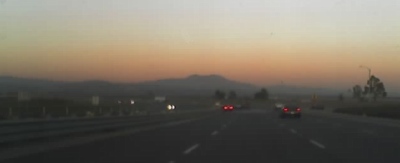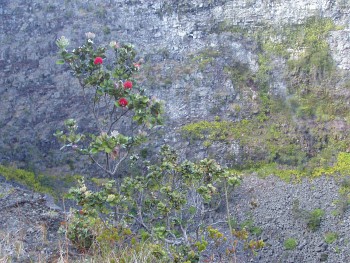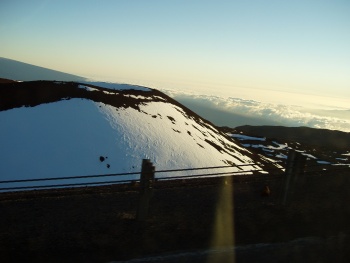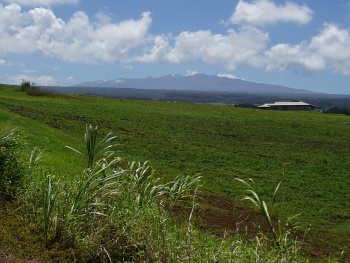About a month ago I posted about noticing the Belt of Venus—the red band that circles the entire horizon just after sunset—and the Earth’s shadow on the sky. I snapped this picture on the drive home this evening. This is looking east, away from the setting sun.

If you look at the right edge of the picture, behind the silhouette of the tree, you can just see the red band fading into the dark gray of the Earth’s shadow.
(And to think, I almost brought the good camera with me this morning… Update: It turns out that I did bring it, and just didn’t realize it was there. Oh, well.)


